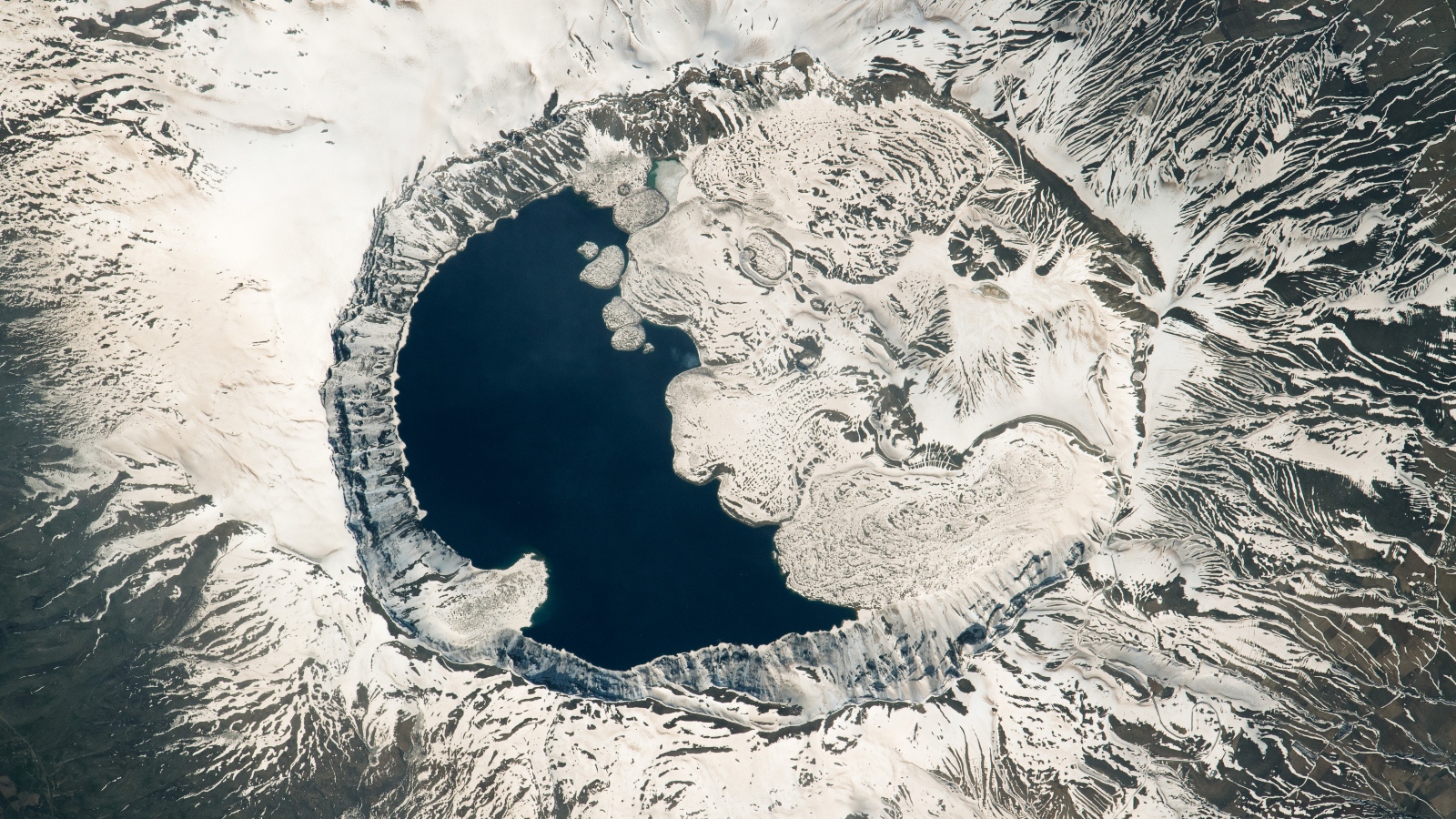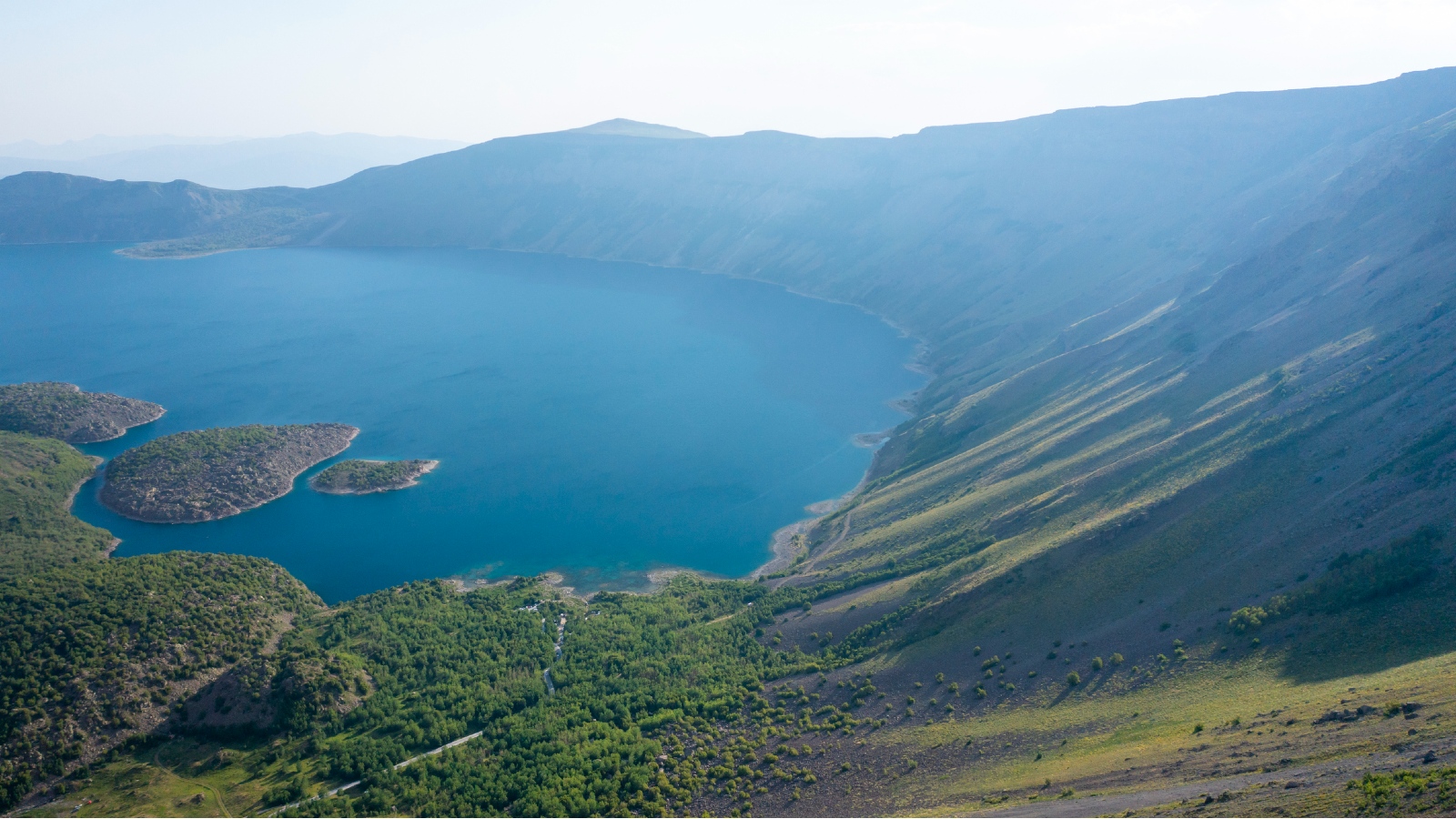
Where is it? Mount Nemrut volcano, Turkey [38.650, 42.230].
What's in the photo? A crater lake and frozen lava flows in the mountain's caldera.
Who took the photo? An astronaut on board the International Space Station.
When was it taken? April 17, 2022.
This striking photo was captured from the International Space Station. It highlights the unusual crater, or caldera, of the Mount Nemrut volcano in Turkey, which is split almost right down the middle by a lake and solidified lava flows.
Mount Nemrut, which was named after the biblical figure King Nimrod, stands 9,672 feet (2,948 meters) tall at the intersection between the Arabian and Eurasian tectonic plates. The dormant stratovolcano last had a major eruption in 1650, according to NASA's Earth Observatory.
The volcano's large caldera, which is around 5.3 miles (8.5 kilometers) across at its widest point and up to 2,000 feet (610 meters) deep, was largely carved by a single massive eruption around 250,000 years ago, according to a 2012 study. This eruption also discharged a huge lava flow that blocked off a nearby river and created Turkey's largest lake, Lake Van, which lies to the east of the mountain.
Related: 12 amazing images of Earth from space

After that, smaller eruptions from vents in the eastern half of the caldera caused a buildup of solidified lava flows on one side of the crater. The other side of the caldera eventually filled with water, forming a crater lake. The difference between the two halves of the volcano's peak is most pronounced when the mountain is covered in snow. When this happens, it is often compared to the yin-yang symbol from Chinese philosophy.
The snow coverage also accentuates folds in the lava flows known as pressure ridges, which were formed by the flowing and cooling of molten rock. These ridges vary widely in size and thickness due to differences in the viscosity of the lava across different eruptions, according to the Earth Observatory.
Nemrut's crater lake has a maximum depth of around 577 feet (176 m) and covers similar lava flows from past eruptions. However, it is not the only lake in the caldera.
A smaller, 36-foot-deep (11 m) lake is nestled between a series of lava flats near the center of the caldera's northern edge. Hot springs feed the lake, which shows that even though the volcano is now considered dead, there is still life beneath the caldera.







